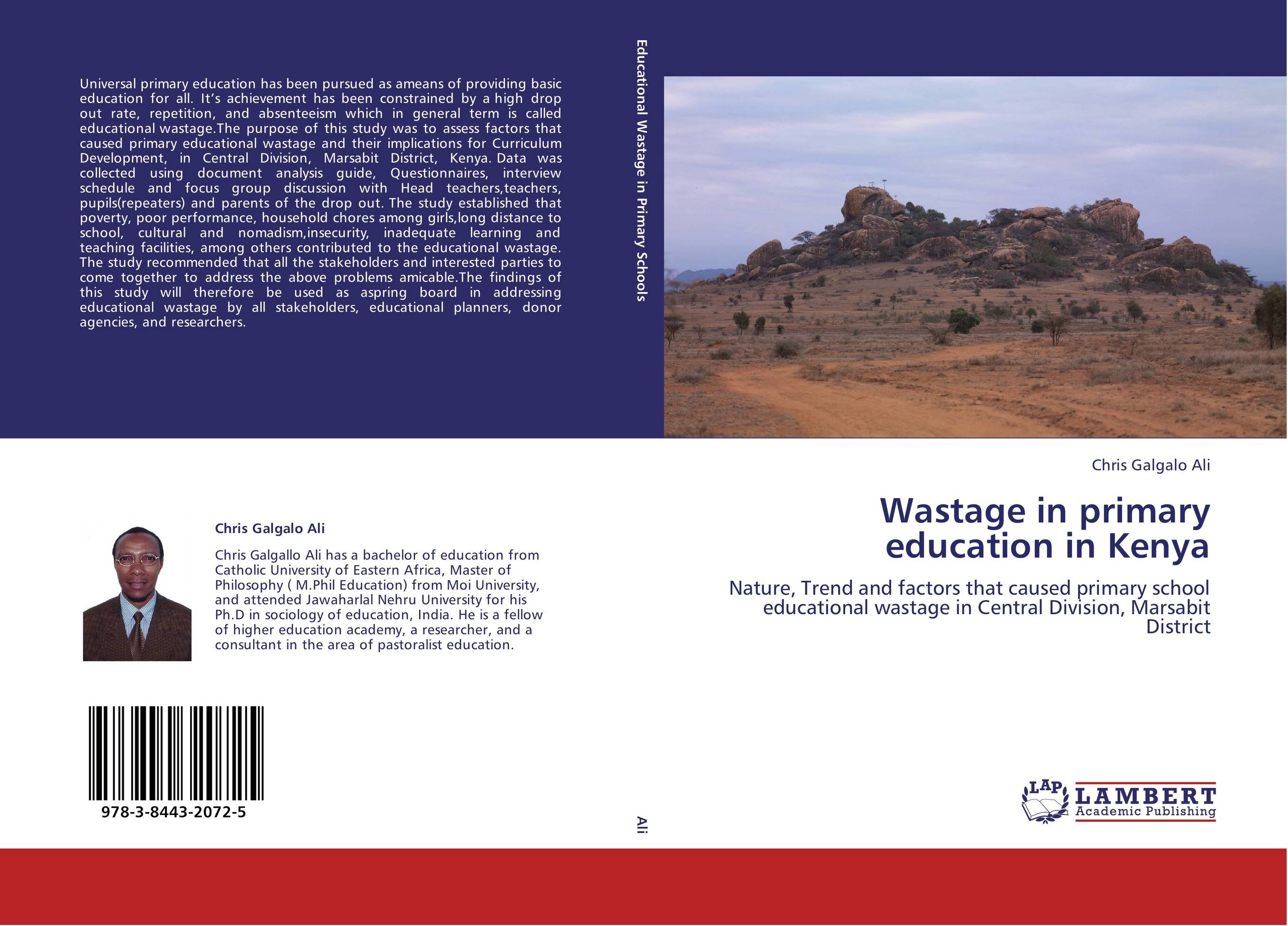| Поиск по каталогу |
|
(строгое соответствие)
|
- Профессиональная
- Научно-популярная
- Художественная
- Публицистика
- Детская
- Искусство
- Хобби, семья, дом
- Спорт
- Путеводители
- Блокноты, тетради, открытки
Wastage in primary education in Kenya. Nature, Trend and factors that caused primary school educational wastage in Central Division, Marsabit District

В наличии
| Местонахождение: Алматы | Состояние экземпляра: новый |

Бумажная
версия
версия
Автор: Chris Galgalo Ali
ISBN: 9783844320725
Год издания: 2013
Формат книги: 60×90/16 (145×215 мм)
Количество страниц: 168
Издательство: LAP LAMBERT Academic Publishing
Цена: 40645 тг
Положить в корзину
| Способы доставки в город Алматы * комплектация (срок до отгрузки) не более 2 рабочих дней |
| Самовывоз из города Алматы (пункты самовывоза партнёра CDEK) |
| Курьерская доставка CDEK из города Москва |
| Доставка Почтой России из города Москва |
Аннотация: Universal primary education has been pursued as ameans of providing basic education for all. It’s achievement has been constrained by a high drop out rate, repetition, and absenteeism which in general term is called educational wastage.The purpose of this study was to assess factors that caused primary educational wastage and their implications for Curriculum Development, in Central Division, Marsabit District, Kenya. Data was collected using document analysis guide, Questionnaires, interview schedule and focus group discussion with Head teachers,teachers, pupils(repeaters) and parents of the drop out. The study established that poverty, poor performance, household chores among girls,long distance to school, cultural and nomadism,insecurity, inadequate learning and teaching facilities, among others contributed to the educational wastage. The study recommended that all the stakeholders and interested parties to come together to address the above problems amicable.The findings of this study will therefore be used as aspring board in addressing educational wastage by all stakeholders, educational planners, donor agencies, and researchers.
Ключевые слова: Educational Wastage curriculum development Kenya



